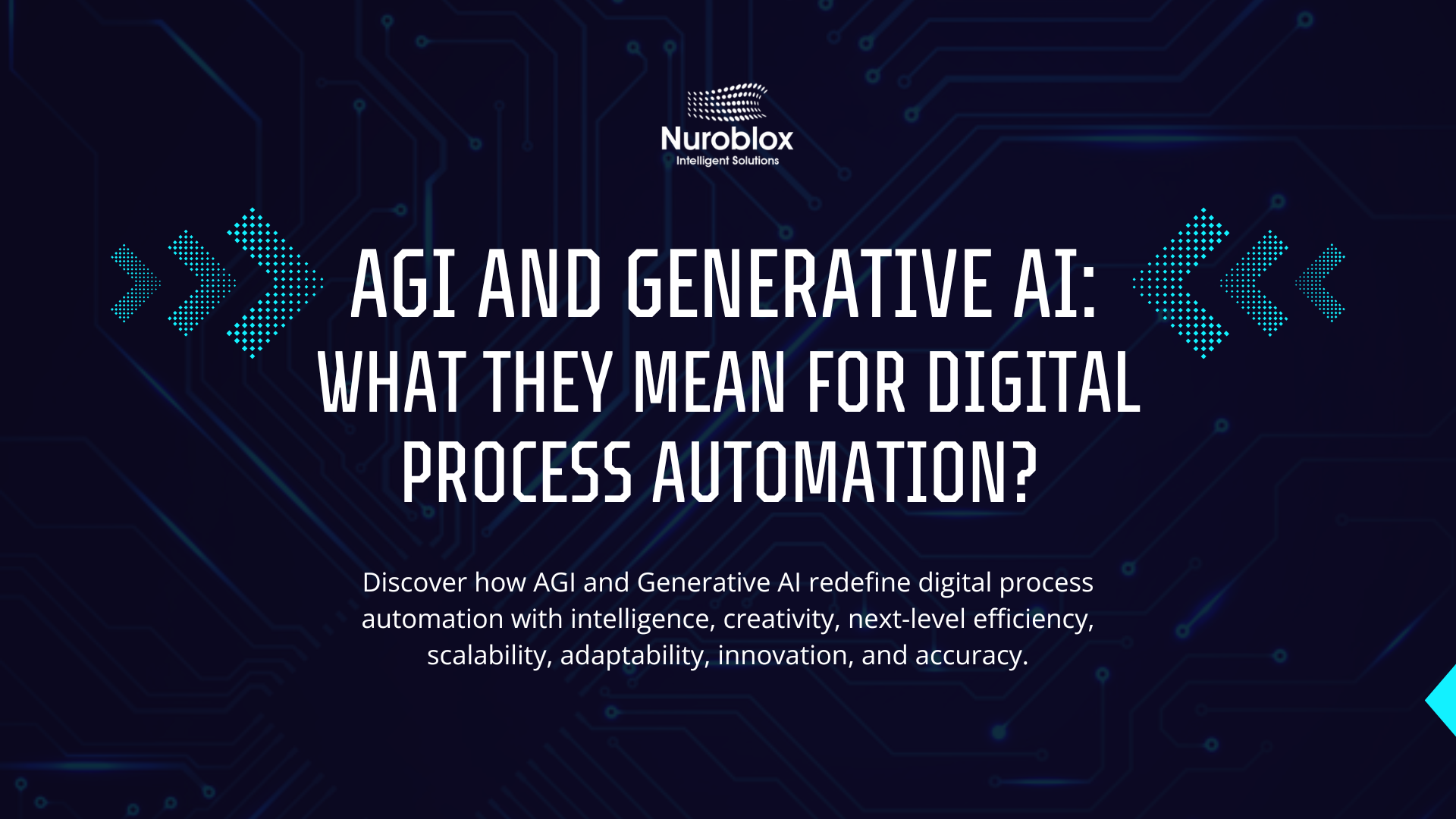AGI and Generative AI: What They Mean for Digital Process Automation?
In a rapidly evolving technological landscape, AGI and Generative AI represent the next frontier of automation. Unlike traditional rule-based automation, these cognitive systems learn, reason, and create ushering in a new era of truly intelligent Digital Process Automation (DPA).
Understanding AGI versus Generative AI
Artificial General Intelligence (AGI) is the hypothetical intelligence capable of understanding, learning, and applying knowledge across any domain – matching human adaptability. In contrast, Generative AI exemplified by large language models (LLMs) like GPT focuses on producing new content (text, code, images) from learned patterns.
| Feature | AGI | Generative AI |
| Scope | Generalized, cross-domain reasoning | Domain-specific content generation |
| Learning | Self-directed, unsupervised learning | Supervised/fine-tuned on large datasets |
| Adaptability | Human-level flexibility | High within trained contexts, limited outside |
| Use Cases | Fully autonomous decisioning | Content creation, code synthesis, document drafting |
| Maturity | Theoretical, research stage | Production-ready, enterprise adoption |
The Evolution of Digital Process Automation
From RPA to Cognitive Automation
- Robotic Process Automation (RPA) – Automates repetitive, rule-based tasks via scripted bots.
- Intelligent Automation (IA) – Introduces AI-driven decisioning for exceptions and
semi-structured data. - Autonomous DPA with AGI and Generative AI – Embeds reasoning, creativity, and continuous
learning enabling end-to-end automation with minimal human intervention.
Key Impacts of AGI and Generative AI on DPA
Contextual Understanding and Adaptive Workflows
Generative AI models can interpret unstructured data, emails, contracts, images and generate actionable insights. AGI’s envisaged reasoning would enable workflows that adapt in real time to changing business contexts.
Automated Knowledge Work
From drafting legal briefs to generating complex financial reports, generative models automate high-value knowledge tasks. This shift frees experts to focus on strategic objectives.
Predictive and Prescriptive Analytics
AGI’s predictive capabilities drive prescriptive decision-making anticipating bottlenecks and prescribing solutions before human intervention is required.
Continuous Process Improvement
Self-learning AI continuously analyzes performance metrics, identifies inefficiencies, and iteratively refines workflows realizing true “automate-and-optimize” cycles.
Business Functions Transformed
| Function | Traditional DPA Impact | AGI & Generative AI Potential |
| Finance | Invoice processing, reconciliation | Autonomous financial forecasting, scenario modeling |
| HR | Onboarding workflows, timesheet audits | AI-driven talent acquisition, personalized learning pathways |
| Customer Service | Chatbots with scripted responses | Conversational AI delivering nuanced, context-aware support |
| Legal & Compliance | Document review, compliance checks | Automated contract synthesis, regulatory gap analysis |
| Supply Chain | Shipment tracking, order processing | Predictive logistics, dynamic route optimization |

Phase 1: Foundation
- Deploy Generative AI for content-centric tasks (e.g., automated report generation).
- Integrate AI services with existing RPA platforms via APIs.
- Establish data governance and security frameworks.
Phase 2: Cognitive Automation
- Introduce LLM-powered assistants for exception handling and decision support.
- Begin pilot AGI-inspired proof-of-concepts in low-risk domains (e.g., internal knowledge management).
Phase 3: Autonomous DPA
- Scale AGI/Generative AI bots to orchestrate multi-system workflows end to end.
- Implement continuous learning pipelines for real-time optimization.
- Monitor ethical, fairness, and compliance metrics with AI governance.
Actionable Insights
- Start Small, Scale Fast – Begin with targeted Generative AI pilots in document-intensive processes.
- Data Readiness – Ensure structured and unstructured data pipelines are mature.
- Governance First – Establish clear AI ethics, security, and compliance policies.
- Continuous Learning – Leverage model retraining and feedback loops for ongoing improvement.



